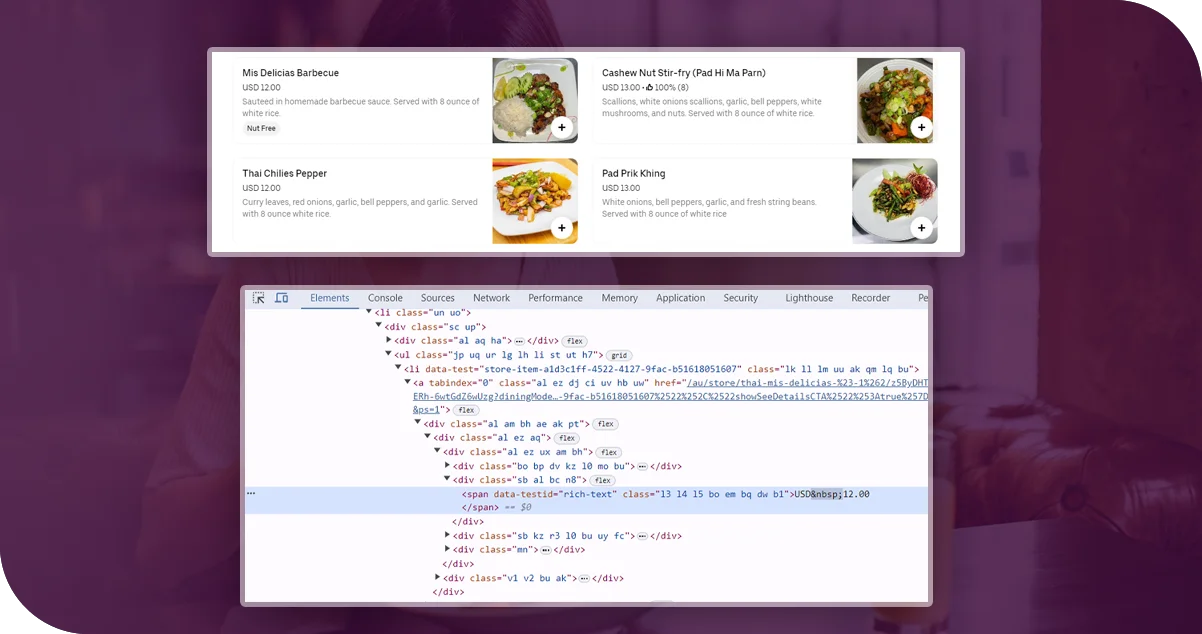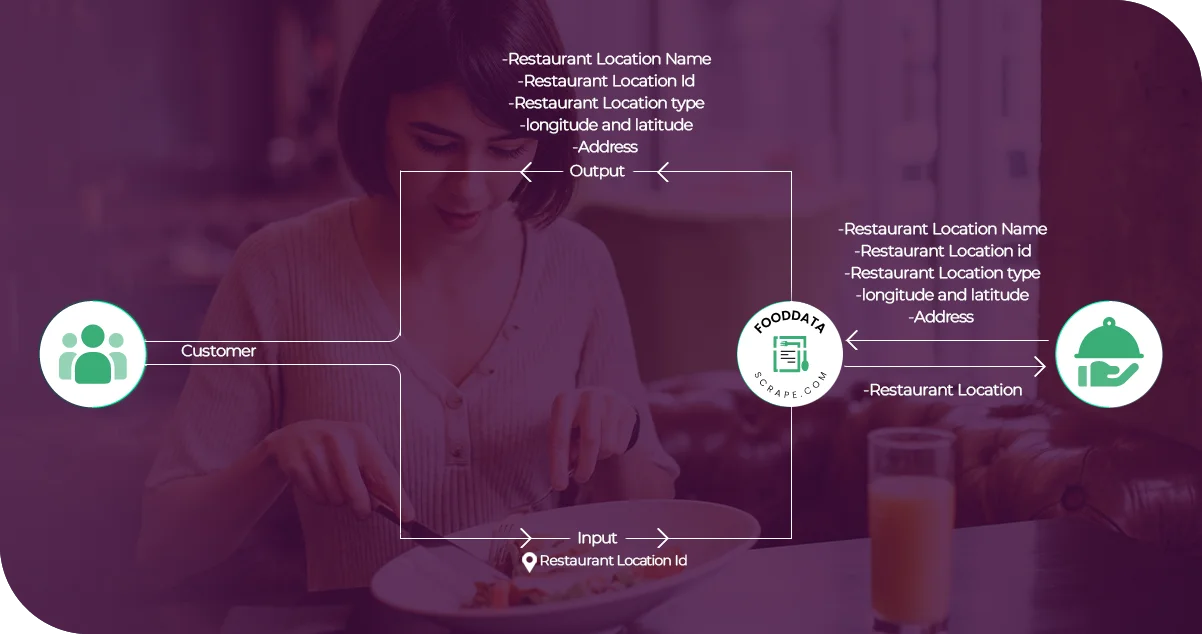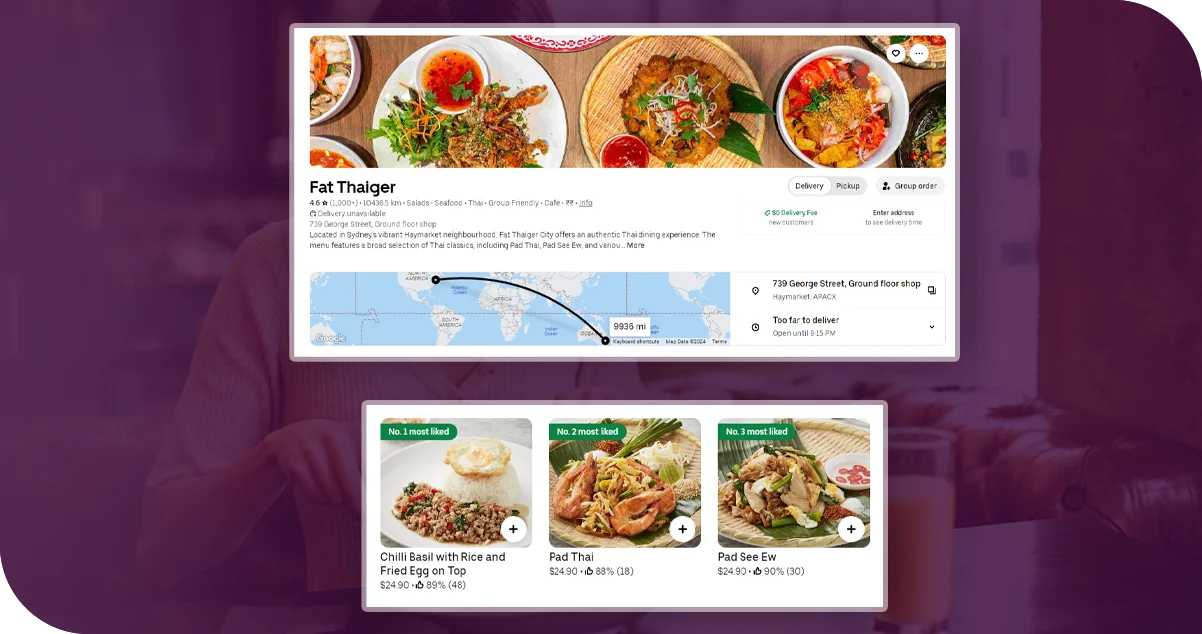The Client
A major fast-food company with 200 restaurants wanted to stay ahead and respond to changing customer needs by innovating. They turned to our fast food restaurant chain data scraping service to get the facts. We analyzed menu trends, customer preferences, and competitor activity through concept testing and gave them new menu items to launch. That's data-driven innovation and how you stay competitive in the business.
Key Challenges

Our client encountered the following issues while scraping data from fast-food restaurants.
Menu Complexity: Our client had to navigate complex and varied menus across 200 fast food restaurants, each with many items with different ingredients and preparation methods.
Regional Variations: They found variations in menu items and pricing across different regions, requiring data scraping techniques to capture and analyze regional data accurately.
Data Consistency: Data consistency was an issue due to menu items being updated frequently, pricing changes, and seasonal promotions requiring continuous monitoring and validation of scraped data for accuracy and relevance.
Key Solutions
We overcome the challenges using advanced restaurant data scraper in the following ways:
Custom Scrape Parameters: Custom scrape parameters for each restaurant chain to match their menu structure and format to get all data and handle menu complexities.
Real-Time Monitoring: Real-time monitoring tools to track changes in menu items, prices, and promotions across all locations to update and adjust data in real time to keep data accurate and consistent.
Data Validation Algorithms: Advanced data validation algorithms to cross-check Food dataset against multiple sources and historical records to ensure reliability and reduce errors caused by regional variations or menu changes.
Methodologies Used

Web Scraping Tools: Use specialized web scraping tools, such as BeautifulSoup or Scrapy, to efficiently extract structured data from restaurant websites.
API Integration: Utilizing APIs provided by restaurant chains, where available, to access structured data in a standardized format directly.
Dynamic Page Handling: Implementing techniques to handle dynamic web pages using Selenium or similar tools to interact with JavaScript-driven content, ensuring comprehensive data extraction.
Data Parsing and Cleaning: Applying robust parsing and cleaning algorithms to transform raw HTML or JSON data into structured datasets, removing inconsistencies and preparing it for analysis.
Proxy Management: Utilizing proxy servers to manage IP addresses and bypass restrictions, ensuring uninterrupted scraping and compliance with website policies.
Quality Assurance: Implementing quality assurance measures such as data validation checks, error handling mechanisms, and periodic audits to maintain data accuracy and reliability throughout the scraping process.
Advantages of Collecting Data Using Food Data Scrape

Food Chain Data Expertise: We scrape data from food chains, knowing their data formats and what matters to their business.
Customized: Our solution is bespoke to each client, so we capture the data points they need to know.
Compliance & Ethics: We scrape ethically and follow all laws and ToS to protect our clients from legal issues.
Scalable & Fast: Advanced scraping methods and tools for big data.
Data Quality Assurance: Strict data validation and cleaning methodologies guarantee high-quality scraped data, reducing mistakes and mismatches.
Client-Centric Approach: As a result, prioritize your clients' satisfaction by giving them continuous assistance, opportunities for personalization, and recommendations derived from scraped data to make them effective.
Final Outcome: We have successfully scraped competitor sites as fast food chain data. This has enabled us to provide valuable insight to our clients. After analyzing the market trends and what competitors were offering, we pinpointed areas that called for changes. The client, among the top players in this industry, was therefore able to develop fresh strategies for introducing new items into their menus in line with emerging customer needs. Through data retrieval, we ensured alignment between new ideas and market forces.



















































































